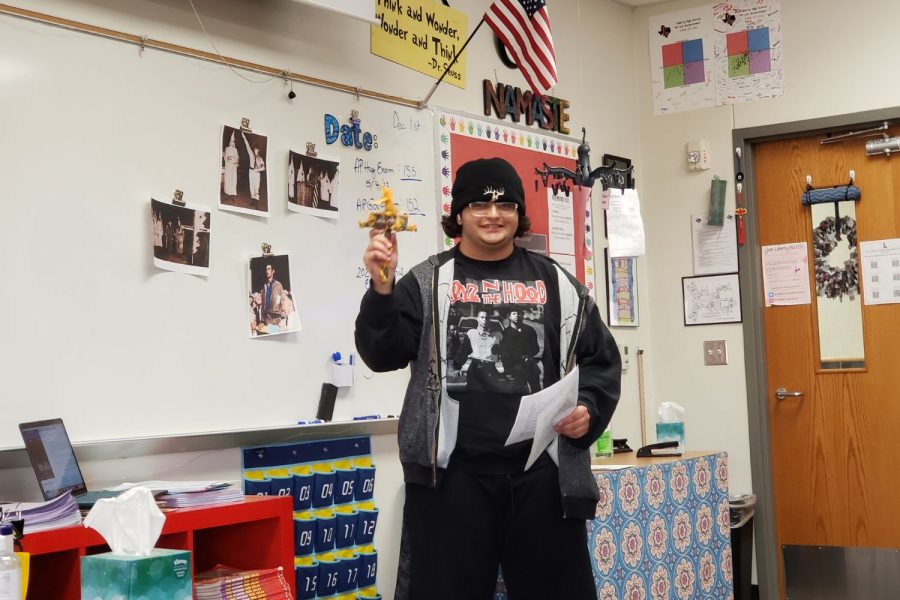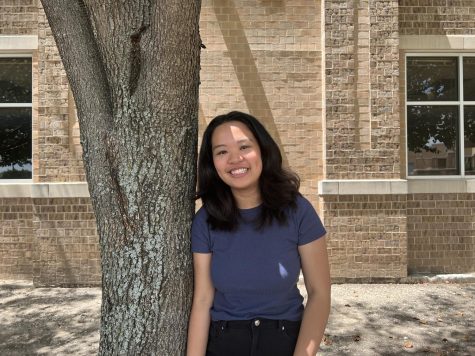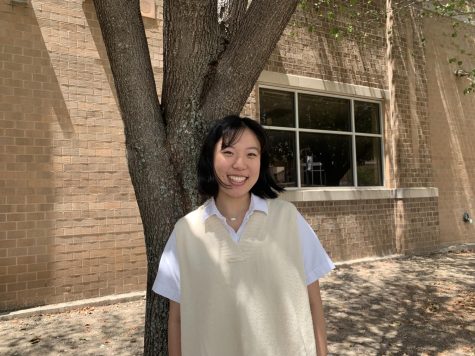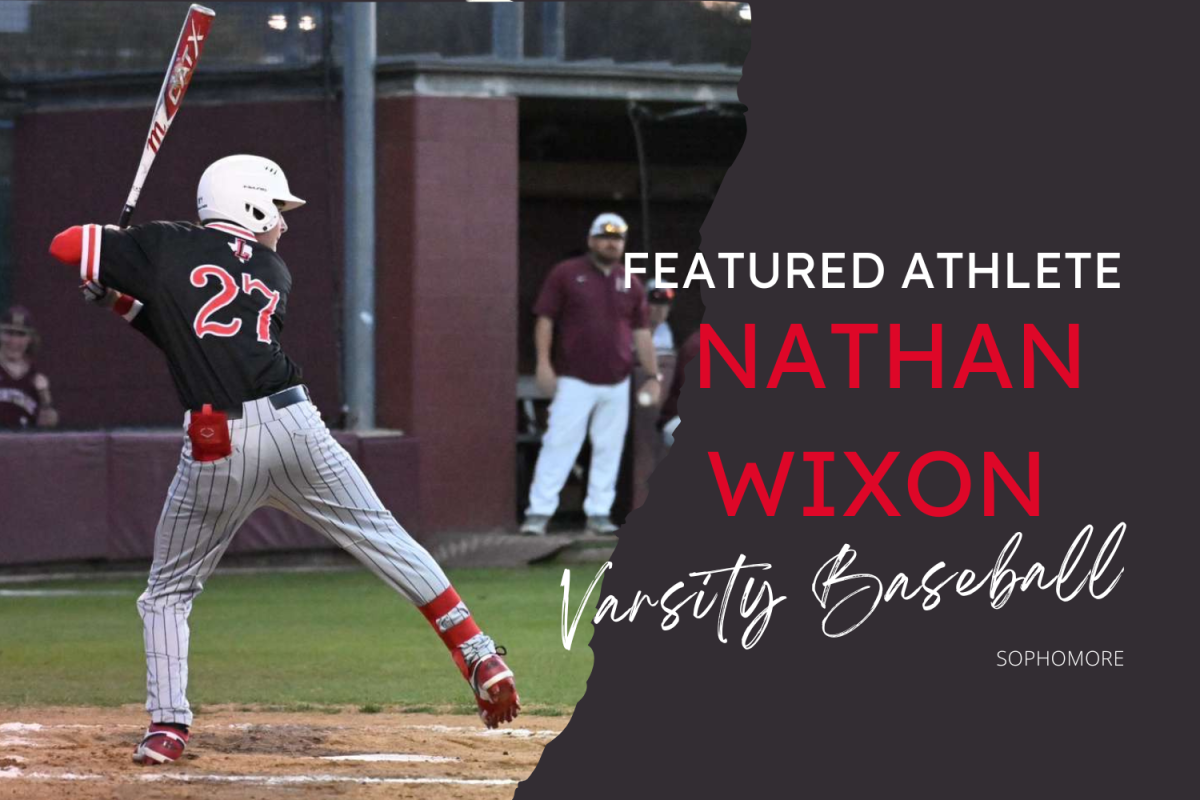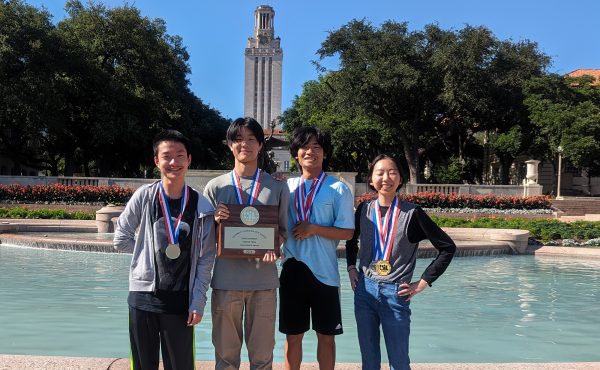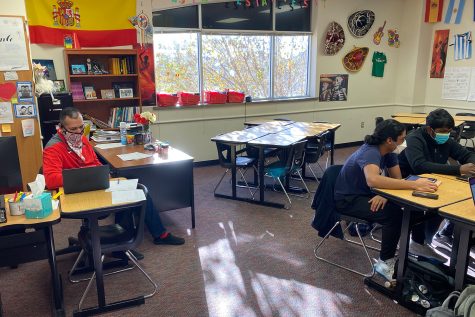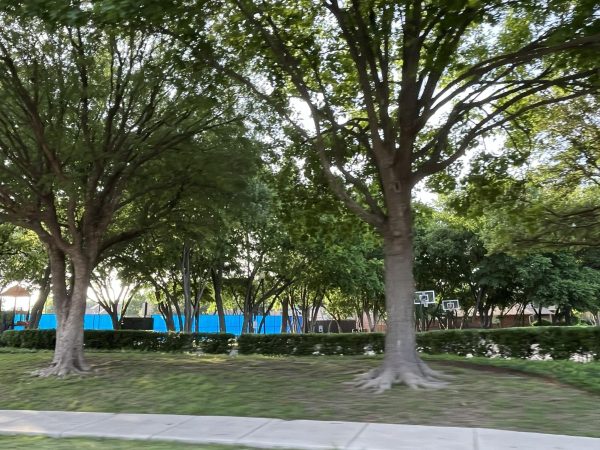Decking the shrub with Supreme Court decorations
Senior Tom Marom represents his assigned court case, Brandenburg v. Ohio, with an ornament of a cross. AP Government students have been working on making ornaments that creatively represent court cases.
December 1, 2022
With the holiday season here, AP Government students have been given the opportunity to create ornaments. However, these decorations are a spin from the typical Christmas accessories as students are instead required to construct visual representations that demonstrate a specific Supreme Court case.
“The project is a way for students to create a type of art or representation of one of the cases that we’ve been working on for the entire semester,” government teacher Amanda Peters said. “So, it is a way for students to create an artifact in which they then can explain the impact of that case to others.”
Senior Kavan Mehta aims to creatively represent his designated case, New York Times v. United States, through the use of supplies such as clay and paper.
“Our case is the New York Times versus the United States, which is basically about the Pentagon Papers that were released via a whistleblower,” Mehta said. “So, essentially to represent the case, me and my partner are making an ornament that has a suitcase, which will have like a newspaper and paper people chain that’s coming out of it to show and represent the spread of ideas through the newspaper of the Pentagon Papers.”
The project has provided senior Ifrah Zainab with the opportunity to further learn and better understand her assigned Supreme Court case.
“It has made me want to go into the deeper details of the case,” Zainab said. “In class, we mostly look at summaries, but I wanted to get to know what each side said and what the issue was. So, I read into the cases a lot to figure out what I wanted to do for my project.”
Through the project, Peters hopes it will help students better memorize and understand the court cases by making creative associations with the ornaments.
“They’re going to be presenting the ornaments to each other. So, when somebody comes up with a really great ornament, it will be a great way to remember the case,” Peters said. “The Tinker versus Des Moines case was about a backpack and about illegal drugs and an ornament that’s shaped like a backpack with illegal drugs helps students to remember the case.”



